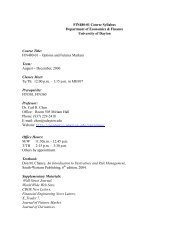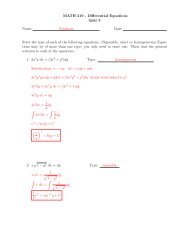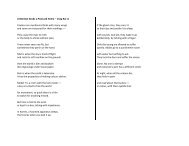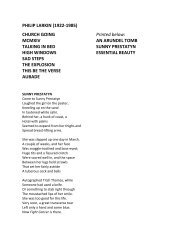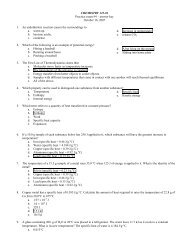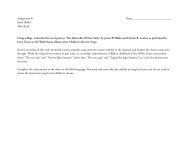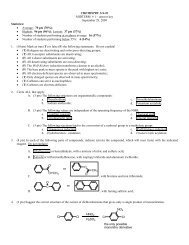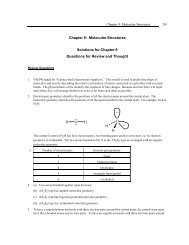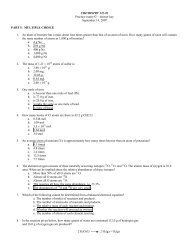Chap 26
Chap 26
Chap 26
Create successful ePaper yourself
Turn your PDF publications into a flip-book with our unique Google optimized e-Paper software.
222 CHAPTER 10<br />
2. The Fed’s goals are to keep inflation in check, maintain full employment, moderate the<br />
business cycle, and contribute toward achieving long-term growth.<br />
3. In pursuit of its goals, the Fed pays close attention to interest rates and sets a target that is<br />
consistent with its goals for the federal funds rate, which is the interest rate that the<br />
banks charge each other on overnight loans of reserves.<br />
C. The Structure of the Fed<br />
1. The key elements in the structure of the Fed are the Board of Governors, the regional<br />
Federal Reserve banks, and the Federal Open Market Committee.<br />
2. The Board of Governors has seven members appointed by the president of the United States<br />
and confirmed by the Senate. Board terms are for 14 years and overlap so that one position<br />
becomes vacant every 2 years. The president appoints one member to a (renewable) fouryear<br />
term as chairman.<br />
3. Each of the 12 Federal Reserve Regional Banks has a nine-person board of directors and a<br />
president. Figure 10.3 shows the regions of the Federal Reserve System.<br />
4. The Federal Open Market Committee (FOMC) is the main policy-making group of<br />
the Federal Reserve System. It consists of the members of the Board of Governors, the<br />
president of the Federal Reserve Bank of New York, and the 11 presidents of other regional<br />
Federal Reserve banks of whom, on a rotating basis, 4 are voting members. The FOMC<br />
meets every six weeks to formulate monetary policy.




